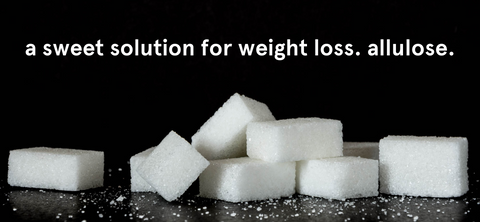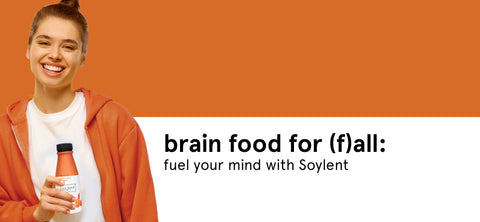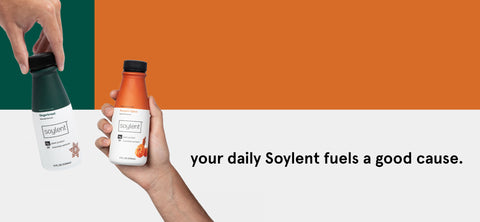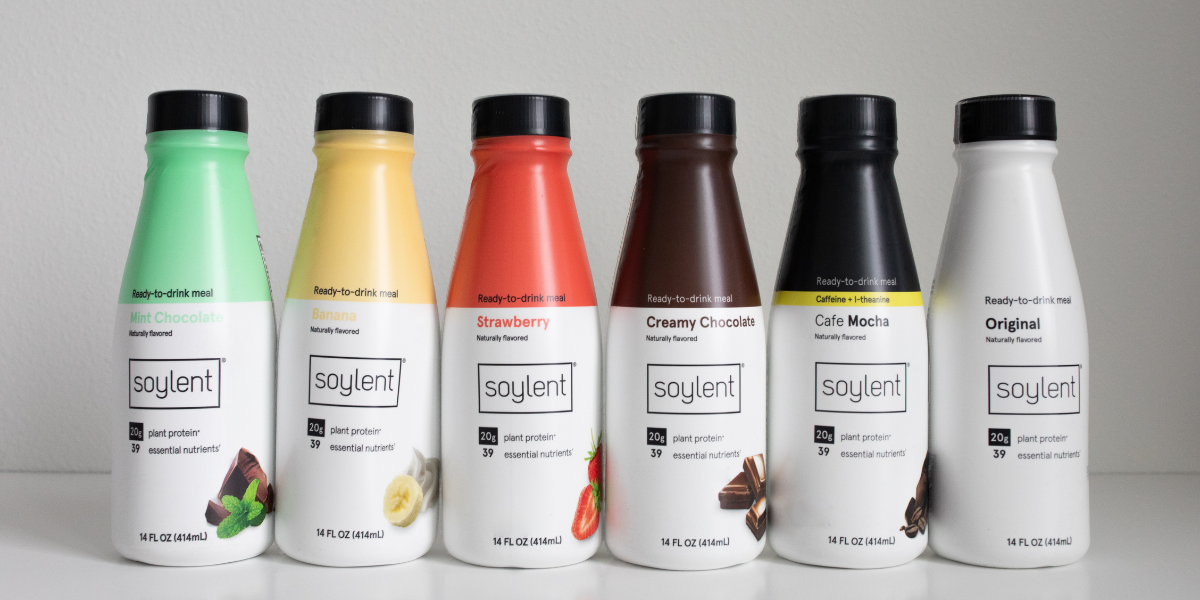
Our core belief at Soylent is that complete nutrition can be both sustainable and accessible to everyone.
We’ve spent countless hours making our products as nutritious, affordable and eco-friendly as possible. But what about the bottle?
Almost every day, we hear from customers who want to make sure they’re making smart choices about what products and containers they buy.
It’s encouraging that so many of our customers care as much about the planet as we do. But, like a lot of questions around environmental impact, packaging is more complicated than a label.
At Soylent, we use high-density polyethylene (HDPE) plastic for bottled drinks, because we’ve found it’s the most sustainable way to deliver our products safely and affordably. To understand why, it helps to learn a bit about the total environmental impact of packaging, and how the choices stack up.
What are the packaging alternatives?
The perfect container is (for now) still a hypothetical. Every packaging choice has pros and cons when it comes to environmental impact, safety, efficacy and cost — some of them more surprising than at first glance.
Four years ago, we began using HDPE, a versatile polymer designed to be food-safe and more environmentally friendly. Unlike more common PET (polyethylene terephthalate) plastic, HDPE can be recycled easily and helps protect the nutritional value of our products over their entire shelf life.
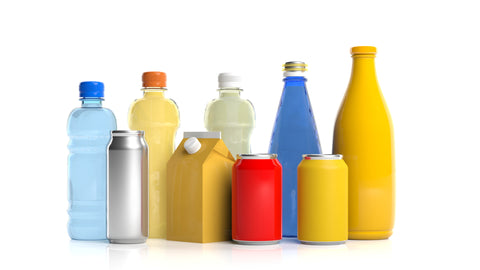
Glass bottles are a common choice that is both reusable and recyclable. But those benefits can be mitigated by their energy- and material-intensive production and heavy weight in transport.
Aluminum containers are durable and lightweight, though energy-intensive to manufacture and unable to safely hold shelf-stable products like Soylent.
Finally, increasingly popular Tetra paks and similar alternatives process paper with aluminum and polyethylene into a container that is lightweight, but difficult to recycle.
What makes an effective container?
There are a few factors we have to weigh when designing the right package for each of our products — and they can sometimes come into tension.
What is the impact of producing the container?
How will the container be transported?
How will it be recycled in practice?
Is the container safe and effective for our products?
Where does it all come from?
Recycling is only the last stage of a bottle’s lifespan. The first is manufacturing: what goes into making the containers you see on supermarket shelves, and how energy-intensive is the process?
In one 2020 study of drink packages, researchers at the UK’s University of Southampton found that glass bottles had the highest negative environmental impact, driven by their manufacturing process. Glassmaking requires extracting virgin materials like sand, soda ash and limestone, and using substantial amounts of energy to melt them at high temperatures. Beyond the emissions impact, these processes can have significant consequences for ecosystems.
While aluminum is the most abundant metal on earth, turning it into a can also takes some heavy lifting. It means mining naturally found deposits of aluminum ore, like bauxite; refining and smelting them with heat, pressure and chemical processes; and further tinkering to create aluminum alloys. Like most mining industries, making aluminum is very energy intensive, on top of spillover effects on land, air and water health.
Manufacturing HDPE also consumes raw materials (petroleum) and energy for processing, though less so than more common PET plastics. We recognize that moving to a post-consumer recycled HDPE material could deliver even greater benefits in reducing our environmental footprint, and it’s something we’re always exploring.
Tetra Paks, made mostly of paperboard along with some plastic, are among the least impactful alternatives to manufacture, although shelf-stable variants also include some aluminum for protection.
The hidden costs of transportation

The explosion of online shipping and on-demand delivery has had undeniable effects on the environment. Transportation remains the largest driver of US greenhouse gas emissions, and emissions from air and ground shipping make up an important share.
Package weight and size make a crucial difference: simply, the more packages a given truck can carry, the fewer miles it has to travel.
Perhaps unsurprisingly, glass is far and away the heaviest option — as much as 30 times the weight of alternatives.
Glass bottles are also far more fragile than the rest, making it harder to ship efficiently and risking wasteful breakages.
Aluminum, HDPE and Tetra Paks are all much lighter and have a lower impact on transportation emissions. Tetra Paks, in particular, can be shipped flat in production and sometimes transported more efficiently given their boxy shape.
Recycling: theory vs. practice
Perhaps the most complex factor, the impact of recycling from any given container goes far beyond the icon on the back.
Recycling isn’t free; it takes time, labor, money and energy to recycle any package. This also leads to stark differences between what can be recycled and what actually gets recycled.
Despite their green reputation, Tetra Paks are notoriously hard to recycle in practice. Because shelf-stable Tetra Paks are made from super-thin layers of paper, plastic and aluminum, they must often be recycled in (and shipped to) specialized facilities, where they undergo carbon-intensive treatment.
As of 2018, only 26% of Tetra Paks worldwide were recycled. And when they are recycled, these cartons are often bound for construction materials like concrete, another major driver of greenhouse gas emissions.
Glass and aluminum are both infinitely recyclable, a boon for their environmental bottom line. But in the US, only 35% of aluminum and 31% of glass is actually recycled in practice, according to the EPA. Recycling glass is also significantly more resource-intensive than recycling aluminum, contributing as much as two-thirds of the energy required to make a new glass bottle.
HDPE, as distinct from PET plastic, can be recycled up to ten times. Though rates of recycling plastic in practice are much lower than they should be, not all plastic is created equal.
While many bottles must have their label removed before recycling — leading to improper recycling by some consumers — Soylent’s HDPE bottles are uniquely manufactured with a similar plastic used for the label so they can be recycled as a single unit, which means consumers don’t have to take an extra step in recycling making it even more likely to be recycled.
Safety first
Finally, no matter how sustainable a package is, it has to put our products on shelves safely.
This one was fairly simple for us: aluminum bottles can’t safely be used in the manufacturing of many shelf-stable products, including our own Soylent, as well as most plant milks.
When designing a bottle, making sure that customers can safely enjoy Soylent for its entire year-long shelf life at peak taste and nutritional value is our absolute priority. HDPE passes that test.
The winner is…
Like a lot of our customers, we believe it’s important for the world to move away from single-use plastics. Unfortunately, making environmentally-sound choices has become a kind of a minefield for many families. Despite good intentions, we can be rushed towards alternatives that may not be as sustainable or effective as they seem.
The truth is that the ideal technology for carrying shelf-stable nutritional liquids, as opposed to water, in a practical and cost-effective way has yet to be invented. (If you have any ideas, let us know.)
Until then, accounting for the whole life-cycle of a container, HDPE remains the best way of getting Soylent from our labs to markets and homes across the country.
We’re immensely proud that our plant-based products are helping consumers make the single biggest switch possible to reduce their carbon footprint. And we’ll continue putting Soylent in the most affordable, safe and sustainable packaging we can find — keeping you updated along the way.





